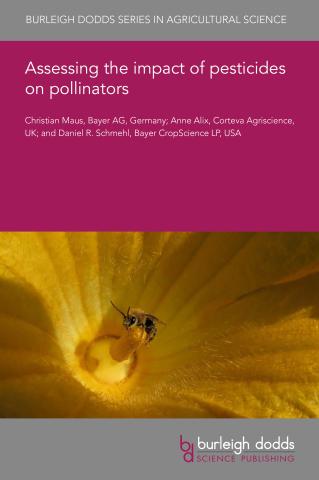In agriculture, pesticides are widely used to control hazardous pests, diseases, and weeds which would otherwise affect the health of crops and agricultural productivity (Popp et al., 2013). The need to control these factors varies across crops and regions, depending on pest pressure, crop variety and its tolerance to stress, and local agronomic and climatic conditions. However, where no or insufficient control is provided, yield losses of up to more than 80% may be the consequence (Oerke, 2006). On the other hand, pesticides are designed to control target populations of organisms which are damaging crops (e.g. insect pests, fungi, weeds) by killing individuals of these organisms or acting on their development or presence in a field. Due to these inherent properties, pesticides may have undesired side effects to the environment if they are not applied with the necessary caution.

This chapter provides an overview of the history of pollination biology, it begins by discussing the basics of pollination and goes on to discuss pollinators and their diversity. Sections also cover the ecology and evolution of floral traits, domestication and its impact on plant-pollinator relationships and how pollinators can impact agriculture. A section on modern agriculture and pollinators is also provided.
Recommended Content
Connected Content
Burleigh Dodds Science Publishing is an award winning independent publisher founded by Rob Burleigh and Francis Dodds in 2015. Our mission is to bring you the key research and latest trends to empower you to make a positive impact on sustainable agriculture, climate change and the UN Sustainable Development Goals. More information at www.bdspublishing.com.
Insect pollinators are crucial for UK agriculture, enabling vital crop pollination for increased yields and quality. Crops like apples, pears, and oilseed rape rely on bees, butterflies, and more. With billions in economic contribution, conserving these pollinators through habitat preservation and reduced pesticides is essential for sustained agricultural success and biodiversity.
It has been reported that up to 95% of all flowering plants require the services of other organisms to move pollen from male to female flower parts during the pollination process. These organisms, including bees, are collectively known as pollinators. However, in light of the growing evidence of global declines in pollinator species, the management, ecology and conservation of wild and managed pollinators is a subject of growing importance and research activity.
Agricultural intensification, or the increase in crop production per unit of input or land area to meet the needs of a growing population, has resulted in a landscape dominated by large scale monoculture cropping. Pollinators, specifically, are impacted by the lack of diverse floral and habitat resources associated with this type of farming. Agriculture must develop practices that diversify the crop landscape and increase the availability of habitat and flowering resources to support these populations. In this chapter, we summarize the available literature on how the production space, i.e., within a crop production field, orchard, or pasture, can be more effectively managed to sustain pollinator populations. We report on various spatial and temporal approaches within the context of various cropping systems (row crops, specialty crops, perennial orchards, and perennial forage and pasture systems). Collectively, these approaches represent opportunities to re-introduce diversity into the agricultural landscape to benefit pollinators.


